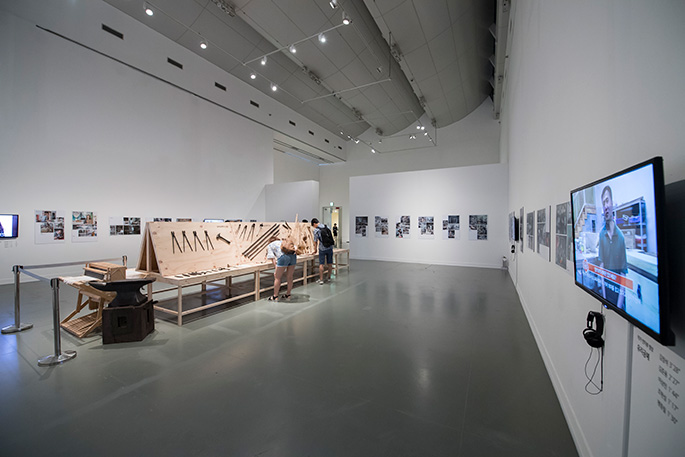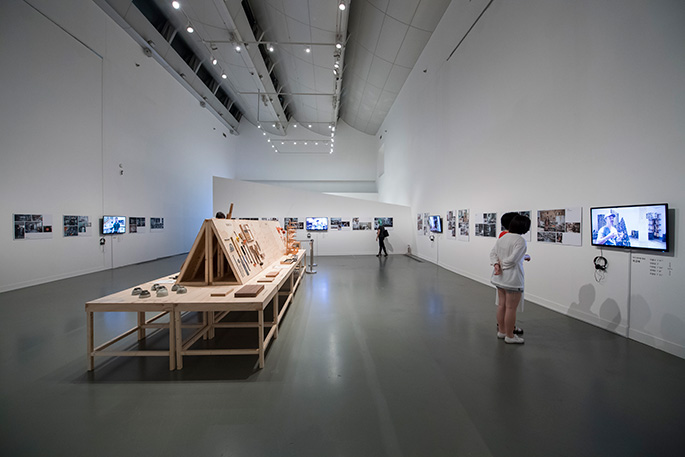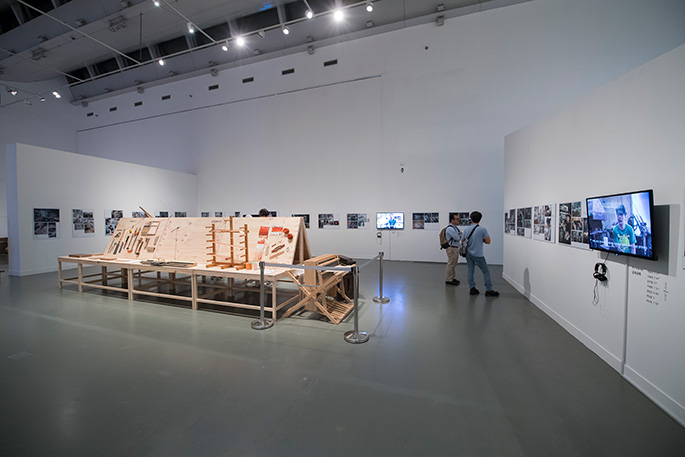 The Gyeonggi Museum of Modern Art is unveiling a contemporary craft exhibition on a large scale to mark the 11th anniversary of its opening. This exhibition brings together works by 32 craft artists in the fields of woodcraft, textile art, metalcraft, ceramics, and glasswork who have lived or actively worked mainly in the Gyeonggi area.
The Gyeonggi Museum of Modern Art is unveiling a contemporary craft exhibition on a large scale to mark the 11th anniversary of its opening. This exhibition brings together works by 32 craft artists in the fields of woodcraft, textile art, metalcraft, ceramics, and glasswork who have lived or actively worked mainly in the Gyeonggi area.
Contemporary Korean craft has made sustained efforts to create a place of its own at the crossroads of art and industry and the interface between art and design. Craftsmen have made constant forays into extending the domains of their expression, broadening the range of the materials they use, and seeking out new innovations as they reinterpret our traditions and move beyond the boundaries of genres on the two tr acks of practicality and artistry.
The exhibition is largely divided into four sections: Part 1 The Land of master craftsmen, in search of contemporary Gyeonggi craft ; Part 2 Use and elegance, harmony between naturalness and artificiality; Part 3 House with craft ; and Part 4 Craft workshops . We hope it could be more than enough for you to feel the taste and beauty of contempor ary craft.
Since long ago, many artisans have actively done their work in Gyeonggi Province. Their houses and workshops can be found here and there within the 31 cities and counties of the province. The Gyeonggi Museum of Modern Art started to search for the modern artisans of Gyeonggi Province to invite to this exhibition. Thanks to advice from specialist consultants, they selected artists in the fields of woodcrafts, textiles, metalwork, ceramics, and glass. The content of the exhibition was decided through visits to the workshops and interviews with the artists.
These ten genre paintings were painted by Gisan Gim Jun-geun, an artist of the late 19th century, and depict scenes of work in the areas of woodcrafts, textiled, metalwork, ceramics, and glass. The Westerners who came to Korea through the open ports of Busan, Wonsan, and Incheon in the late 19th century requested the genre paintings in order to understand Joseon’s customs, or as souvenirs. To fulfill their requirements, Gim Jun-geun produced a number of works, and there remain over 1,500 genre paintings in over 20 museums home and abroad. He not only depicted farming, weddings, handicrafts, and commercial exchange, but also funerald, ancestral rituals, and punishments. He also drew the special scene of spinning threads or weaving on a loom, generally performed by women, reflecting the customs of his time.


The core purpose of handicrafts is to make useful items applying appropriate techniques for each material based on an understanding of the characteristics of the materials such as wood, fabric, metal, leather, soil, and glass, and employing fire and water accordingly. Manufacturing craft works starts with considering the materials before fulfilling the craftsman’s will. Regarding the status of the handicraft today, it is somewhere between industry and art, making its way between art and design. Some put heavy emphasis on the greatest virtue of the handicraft being its utility. Others try to expand the realm of handicraft, turning it into something that shows diverse formativeness based on the various forms and differing characteristics of the materials.
Woodcraft is closely related to life in a house. People have cut wood and made useful things since long ago, and we have an outstanding tradition of wooden furniture and furniture made using wood. The five artists who submit their pieces for this exhibition have their own interpretation and questions regarding the traditional and modern human life. Their themes range from the essential questions such as ‘carpenters and labor’ to topics for the future such as ‘rationalization of materials and their processes’. Each of the artists could be described thus: Cho Yongwon, a craftsman who resonates the breath of humanity; Park Honggu, an artisan who carves out the real and the abstract; Jeong Jaewon, a calm carpenter who is permitted by the trees to make furniture for daily life; Yang Woonggul, an optimistic realist and classicist who makes wood furniture; and Lee Hyunjung, an artist in the laboratory who dreams of the marriage of traditional culture and modern materials.
– Lee Seong-ju (craft critic)

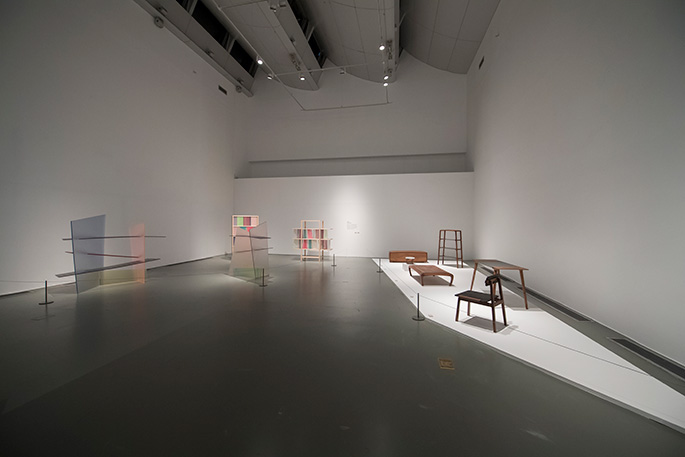
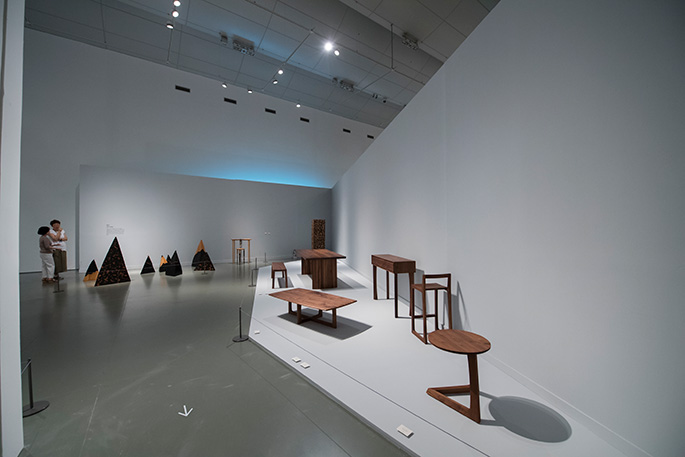

In this diversified society, crafts are the physical objects that accompany human life. They lead emotional sympathy transcending cultural borders, existing as stories and practices in everyday life. Post-modernism has brought about the diversification of media, blurred the lines between genres, and weakened the norms. This tendency has influenced the artisan not only in terms of accepting the traditions and developing them but also in embracing today’s complicated and diverse arts. The craft has now become a field of cultural practice, in that it carries the results of humanity’s physical and spiritual efforts. The textile craft best illuminates the expansion of the contemporary crafts. Based on the traditions, artists creatively express unique formativeness by mingling the unfamiliar with existing materials, methods, and creation processes, going beyond the familiar system and customs.
– Gim Ji-eun (craft critic)

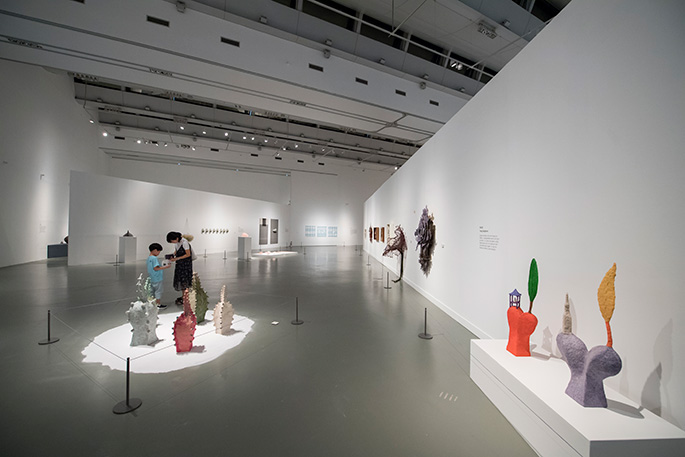

The works of metal craft are divided into daegong (making larger items) and segong (detailed creation). Daegong includes making containers, stationery, furniture, architectural pieces, and sculptures. All of them are made utilizing the strength of the metal and its structural properties. Daegong artists include Choi Sangyong, who makes metal furniture using traditional hammering techniques, Park Jongdeok, who forms fantastic images through metal sculptures that show light and mechanical structure, Yoon Seokchul, who manufactures household items including exquisite and practical stationery and watches, and Choi Sunho, who explores the possibility of mass production by mixing metal and wood. In the field of segong, more precise technology is used, and recently has reflected the international trends of expanding materials. Segong artists include Sin Hyejung, who captures detailed plant images using the technique of relievo, Chang Jungeun, who draws the microscopic world by experimenting with materials, and Lee Jeonghwa, who combines photo images to remind us of social issues.
– Jeon Yong-il (a professor of Kookmin University)

Gyeonggi Province has a long history of ceramic culture. The baekja (white porcelain) of the Joseon Dynasty was mainly produced at the official kiln of the branch office of saongwon (royal cuisine office) that was built in 1467 in Gwangju, Gyeonggi. Gyeonggi has been the major region of manufacturing ceramic products in Korea even until today. According to the complete enumeration conducted in 2015, 868 of the 1,614 kilns nationwide are in Gyeonggi Province. This means that more than half of the ceramic products are made in Gyeonggi. This exhibition lets you take a glance at Gyeonggi’s ceramic culture which has developed thanks to infrastructure and historic traditions. Not only cheongja (greenware), baekja, and buncheong wares, but also onggi (earthenware) will be on display with an introduction of the artists who are carrying on and modernizing the traditions.
– Jeong Yeon-taek (an honorary professor of Myongji College)

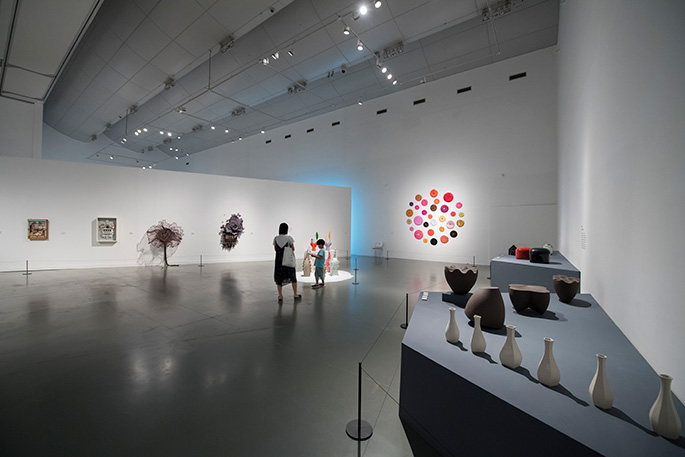
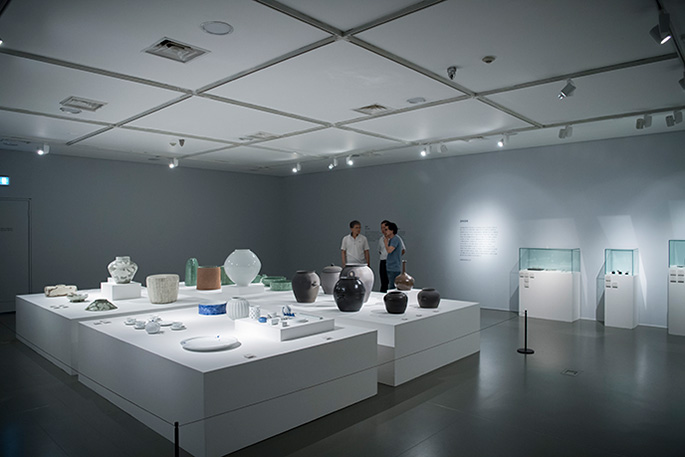
Glass turns into a liquid at high temperatures, and solidifies again when cooled down. However, solid glass possesses a non-crystalline structure which is unlike other materials that crystallize, so glass is a mysterious material that is called an amorphous solid or undercooled liquid. Glass can often be used not only to make useful items but also sculptures, because it allows for the artists to express various shapes, colors, textures, and volumes using diverse techniques along with using both transparency and opacity. Also, glass carries a number of unique philosophical and physical meanings. Its transparency symbolizes the elements without fixed form such as air, water, and ice, its opacity the mystery of the fetus, its fragility the brevity of human life, its characteristics such as minerals the magical things, and the vivid lights reflected on it spirituality. You should be well aware of such philosophical connotations of glass along with its formative properties when making and appreciating the glass pieces.
– Kim Gi-ra (visiting professor at Kookmin University)
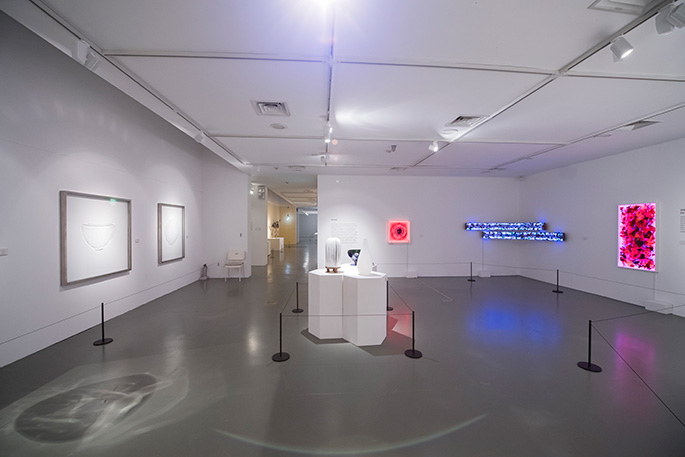
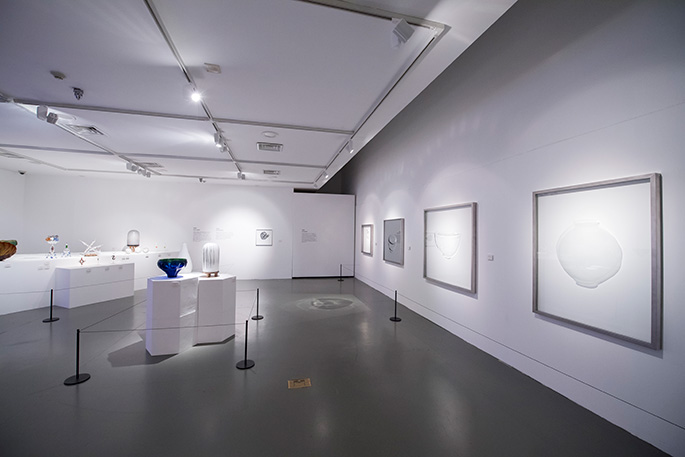
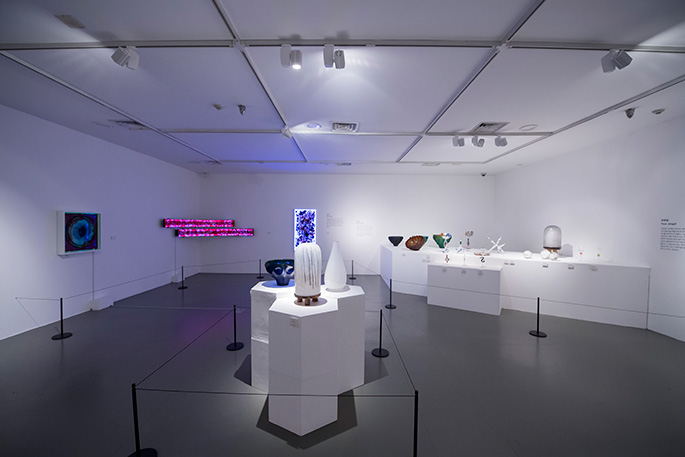
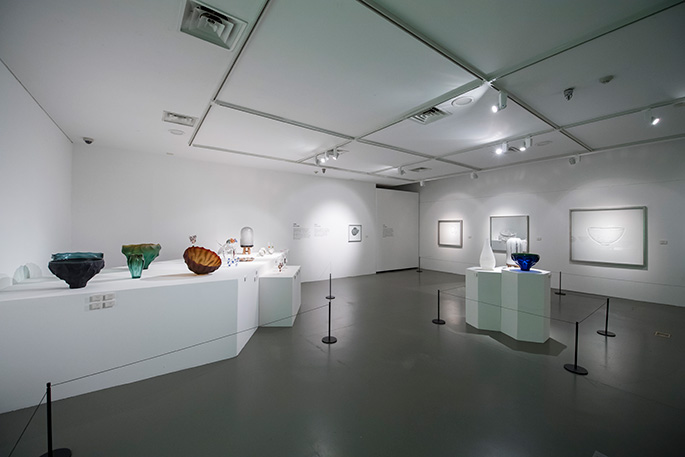
A craft item is something that humans keep and use. The relationship between the handicrafts and humans is closely formed in the home, where a person resides. Here, you can see the items placed inside and outside of the house showing the place where one eats and drinks, communicates and rests, thinks and plays, and decorates. One to two items of each artist have been selected to be categorized according to their instrumental functions for rest, recreation, restoration, thinking, play, and decoration, and they were placed accordingly in the yard, living room, kitchen, study, and bedroom of the House of Crafts. Enjoy the usefulness and form of each item, and feel the harmony as they are intertwined with each other.
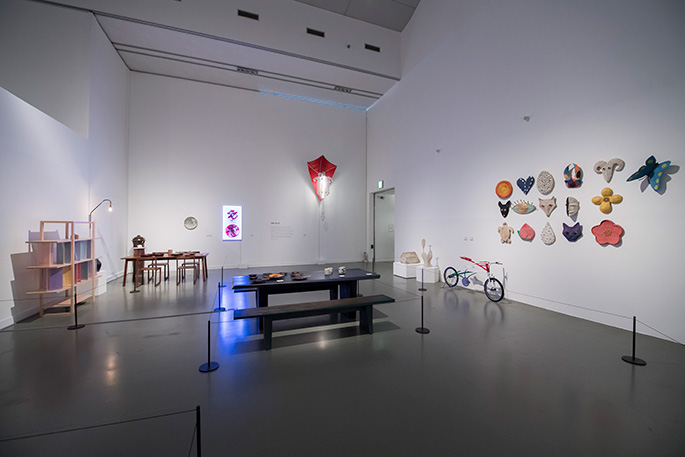
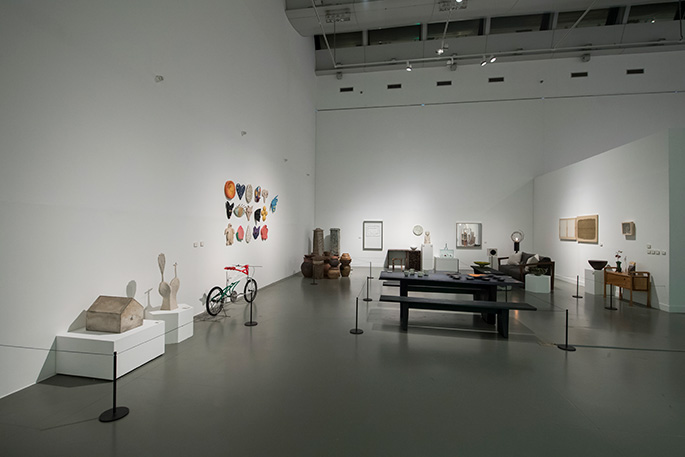
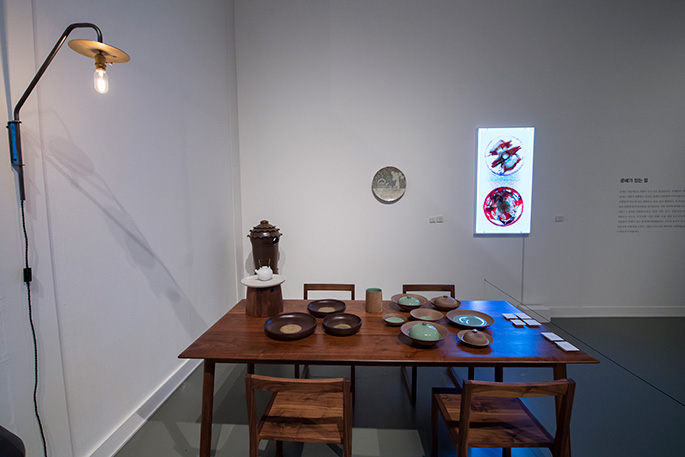
After visiting 31 workshops of artisans here and there in Gyeonggi, we display their photos and videos, along with the materials and tools that they use. The photos capture the scenes from their workshop: the workshop filled with tools and materials where the final works are placed, the artists at work, their hands, and their figure poised towards the camera. In the videos, the artisans answer questions from visitors.
